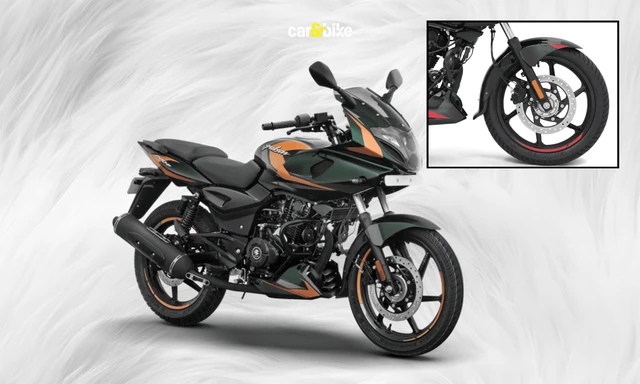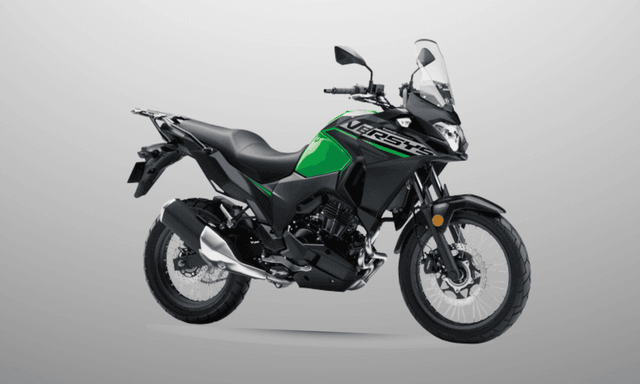What's Inside a Formula 1 Helmet?

Most fans and teams identify the racers by their helmets. Helmets are a distinct part of driver's clothing, and each helmet uses different colours and features sponsor and team logos. However, the primary purpose of helmets in motorsports is to safeguard the driver's head from injuries.
There have been instances where drivers have only survived because of these helmets. So, it's not only the colourful identification, but helmets are also essential protective gear. This article will help you learn all about helmets in Formula 1.
Formula 1 Glass Fibre Helmets
The use of glass fibre helmets for Formula 1 began in the late 50s. Until then drivers were using cork helmets as mandated by the FIA and several were also using steel crash helmets. Early racers merely wrapped a canvas cloth around their head and wore goggles to keep out flying pebbles and insects. The glass fibre helmets introduced in the 50s were considerably more durable and stronger than their steel counterparts. Helmets produced using glass fibre are more aerodynamic and offer better protection for the face. The early generation of these helmets, however, featured an open-faced design, which meant that drivers still wore goggles and covered their face with cloth.
With the founding of Grand Prix Drivers´Association in 1961 and increased emphasis on driver safety, a visor was also integrated onto the helmets. This made goggles redundant. Later, FIA also introduced fireproof innings to these helmets. The helmets also carried an inbuilt air supply system and radio systems to facilitate communication.

Photo Credit: maxf1.net
Formula 1 Carbon Fibre Helmets
In 2001, carbon fibre helmets replaced glass fibre ones. Carbon fibre was tougher than glass fibre and also allowed modifications and tailoring. Even though these helmets are typically heavier, they allow better load distribution during a crash. There are 17 comprehensive layers in a carbon fibre helmet.
The rigid shell of carbon fibre features a high-density foam. This foam lining absorbs impact and distributes the weight. After performing a laser scan on the driver's head, the team customises the innermost layer.
This layer includes a plush foam to deliver comfort and better fitment. On the other hand, the helmets also have chin straps to better fit and safety for the driver.

Photo Credit: www.peakpx.com
Formula 1 Helmet Testing and Standard
FIA makes it mandatory for all helmet designs to undergo comprehensive safety tests. These tests ensure that the helmets can effectively safeguard the driver in case of an impact. The safety test involves dropping 5kg of steel anvils from a height of 3.3 metres on the helmet. Even if the outer part of the helmet is dented, the inside foam layer and steel casing should be unaffected.
Also, the visor of the helmets should use a 3mm thick polycarbonate. The helmets are tested by shooting lead pellets at 500 km/h speed levels. The test for visors includes loading them with weight and ensuring that they do not come off or cut loose during a crash.
These stringent rules for helmets came after an accident involving a Brazilian racer who died from head injuries.

Photo Credit: www.formula1.com
FIA strives and is constantly trying to bring innovations to enhance the safety of drivers. Without these quality helmets, F1 drivers would indeed be at greater risk.
Trending News
 1 min readTriumph Tracker 400 Unveiled in UK
1 min readTriumph Tracker 400 Unveiled in UK
Latest News
 Jafar Rizvi | Dec 17, 2025Updated Bajaj Pulsar 220F Does Not Get Dual-Channel ABS; Company Issues ClarificationBajaj Auto has confirmed that the updated Pulsar 220F does not feature dual-channel ABS, contradicting earlier reports.1 min read
Jafar Rizvi | Dec 17, 2025Updated Bajaj Pulsar 220F Does Not Get Dual-Channel ABS; Company Issues ClarificationBajaj Auto has confirmed that the updated Pulsar 220F does not feature dual-channel ABS, contradicting earlier reports.1 min read Janak Sorap | Dec 16, 2025Triumph Tracker 400 Unveiled in UKBased on the Speed 400’s platform with the tune from the Thruxton 400.1 min read
Janak Sorap | Dec 16, 2025Triumph Tracker 400 Unveiled in UKBased on the Speed 400’s platform with the tune from the Thruxton 400.1 min read car&bike Team | Dec 16, 2025Kawasaki Versys-X 300 Offered With Rs 25,000 DiscountAfter the discount, the entry-level Kawasaki Adventurer tourer is priced at Rs 3.24 lakh (ex-showroom).3 mins read
car&bike Team | Dec 16, 2025Kawasaki Versys-X 300 Offered With Rs 25,000 DiscountAfter the discount, the entry-level Kawasaki Adventurer tourer is priced at Rs 3.24 lakh (ex-showroom).3 mins read car&bike Team | Dec 16, 20252026 MG Hector Prices, Variant-Wise Features ExplainedThe updated Hector is sold in 5 trim levels - Style, Select Pro, Smart Pro, Sharp Pro, Savvy Pro.2 mins read
car&bike Team | Dec 16, 20252026 MG Hector Prices, Variant-Wise Features ExplainedThe updated Hector is sold in 5 trim levels - Style, Select Pro, Smart Pro, Sharp Pro, Savvy Pro.2 mins read Janak Sorap | Dec 16, 2025Yamaha R3 and MT-03 Discontinued in India; Here’s WhyThe motorcycles had revied around a price revision of more than a lakh earlier this year, followed by additional discounts due to GST reform, and yet have failed to secure any momentum.1 min read
Janak Sorap | Dec 16, 2025Yamaha R3 and MT-03 Discontinued in India; Here’s WhyThe motorcycles had revied around a price revision of more than a lakh earlier this year, followed by additional discounts due to GST reform, and yet have failed to secure any momentum.1 min read Jaiveer Mehra | Dec 15, 2025Mahindra XUV 7XO Interior Previewed Ahead Of Debut; Triple Screen Layout ConfirmedNew teaser video provides a glimpse at the facelift XUV 700’s cabin and confirms some of the features.1 min read
Jaiveer Mehra | Dec 15, 2025Mahindra XUV 7XO Interior Previewed Ahead Of Debut; Triple Screen Layout ConfirmedNew teaser video provides a glimpse at the facelift XUV 700’s cabin and confirms some of the features.1 min read
 Janak Sorap | Dec 11, 2025Harley-Davidson X440 T First Ride Review: Smarter and SharperHarley-Davidson has taken the X440 and given it a more focused and engaging twist. The result is the X440 T—essentially the same platform but updated in areas that give the motorcycle more appeal and riders more thrill.5 mins read
Janak Sorap | Dec 11, 2025Harley-Davidson X440 T First Ride Review: Smarter and SharperHarley-Davidson has taken the X440 and given it a more focused and engaging twist. The result is the X440 T—essentially the same platform but updated in areas that give the motorcycle more appeal and riders more thrill.5 mins read Shams Raza Naqvi | Dec 10, 20252025 Mini Cooper Convertible Review: More Colour On Indian RoadsThe updated Mini Cooper Convertible is set to be launched in the Indian market in the next few days. We drive it around Jaisalmer for a quick review.1 min read
Shams Raza Naqvi | Dec 10, 20252025 Mini Cooper Convertible Review: More Colour On Indian RoadsThe updated Mini Cooper Convertible is set to be launched in the Indian market in the next few days. We drive it around Jaisalmer for a quick review.1 min read Bilal Firfiray | Dec 8, 2025Tata Sierra Review: India’s New Favourite?Marking its return after a few decades, the reborn Sierra has made everyone sit up and take notice. But is it worth the hype?10 mins read
Bilal Firfiray | Dec 8, 2025Tata Sierra Review: India’s New Favourite?Marking its return after a few decades, the reborn Sierra has made everyone sit up and take notice. But is it worth the hype?10 mins read Girish Karkera | Dec 4, 20252026 Honda Prelude First Drive: Domesticated Civic Type RA sporty-looking coupe built to give customers a taste of performance but not at the expense of everyday practicality.5 mins read
Girish Karkera | Dec 4, 20252026 Honda Prelude First Drive: Domesticated Civic Type RA sporty-looking coupe built to give customers a taste of performance but not at the expense of everyday practicality.5 mins read Seshan Vijayraghvan | Nov 29, 2025Mahindra XEV 9S First Drive Review: Big Electric SUV, Bigger ExpectationsThe XEV 9S lands at a time when the EV crowd is growing fast. It’s a big, born-electric, three-row SUV that starts under 20 lakh. It sits close to the XUV700 in size, but the brief is very different. Here’s what it’s like on the road.11 mins read
Seshan Vijayraghvan | Nov 29, 2025Mahindra XEV 9S First Drive Review: Big Electric SUV, Bigger ExpectationsThe XEV 9S lands at a time when the EV crowd is growing fast. It’s a big, born-electric, three-row SUV that starts under 20 lakh. It sits close to the XUV700 in size, but the brief is very different. Here’s what it’s like on the road.11 mins read
































































































































